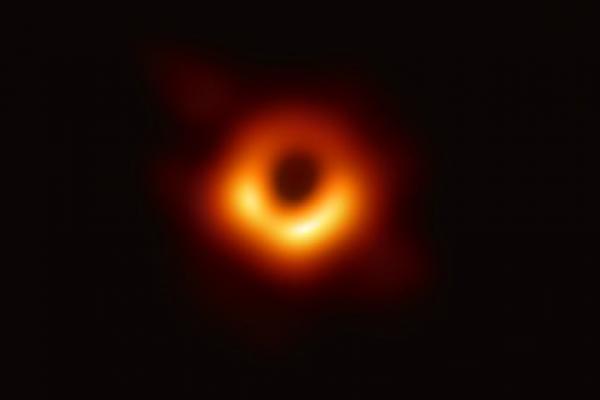July 9, 2019
STEMcoding Black Hole Videos Go Viral!

(Originally posted http://u.osu.edu/stemcoding)
This spring we were all amazed to see the first images of gas falling into a supermassive black hole which were taken by a global radio astronomy collaboration called the Event Horizon Telescope. OSU is not part of that collaboration but many members of our department celebrated the discovery by creating educational videos on gravity and black holes with the STEMcoding YouTube channel. Launched in 2017 by Prof. Chris Orban and OSU alum Prof. Richelle Teeling-Smith, the STEMcoding project aims to help high school teachers integrate coding into their courses. Their videos are recorded at OSU’s campuses in Columbus and Marion.
On a human level, of the most celebrated aspects of the black hole image was the interdisciplinary team of astronomers, statisticians and computer scientists who worked together to develop sophisticated codes to combine the data from various radio telescopes. For the public, the black hole image is a reminder of how important computing has become to modern science. One of the most iconic moments of the story was the picture of Caltech computer science professor Katie Baumann sitting at her laptop and looking at the first results for the black hole image. The ecstatic look on her face looking at the result of many Terabytes of data analysis will surely be one of the most memorable scientific moments of 2019.
Not long after the black hole image was released, Prof. Orban got a call from NYU arts professor Dan Shiffman who runs the wildly popular Coding Train YouTube channel. With almost 1 Million subscribers, the Coding Train is easily the most watched YouTube channel on coding. A few days before the black hole image was released, youtuber Derek Muller of Veratisium released a detailed video of what the black hole image might look like and it included a simulation from astronomers showing how light rays are deflected near a black hole. Shiffman wanted to show his fans how to build a code like that. The STEMcoding project had recently released a coding tutorial video on gravity and orbital dynamics featuring Prof. Orban, CCAPP postdoc Johnny Greco, and OSU astronomy member Amy Sardone.
Within a couple days, Prof. Orban helped Shiffman add relativistic corrections into his code without overwhelming the computing capacity of a typical laptop. Just two weeks after the black hole image was released, the Coding Train posted a video describing the code and giving a big shout out to Prof. Orban and the STEMcoding project for their help. Since that release the Coding Train video on black holes has been viewed over 85,000 times.
Continuing the celebration of the black hole image, STEMcoding recently released a new coding tutorial video series on escape velocity and Newtonian black holes that is designed to fit into a high school astronomy class. CCAPP grad students Jahmour Givans and Danielle Roberts are featured in the video. Danielle is also part of @howwescience which is where CCAPP Prof. Annika Peter and her students post fun photos from their research group and travels. Teachers interested to integrate STEMcoding activities into their courses should reach out to Prof. Orban (orban@physics.osu.edu) to learn more about professional development opportunities and other resources.
